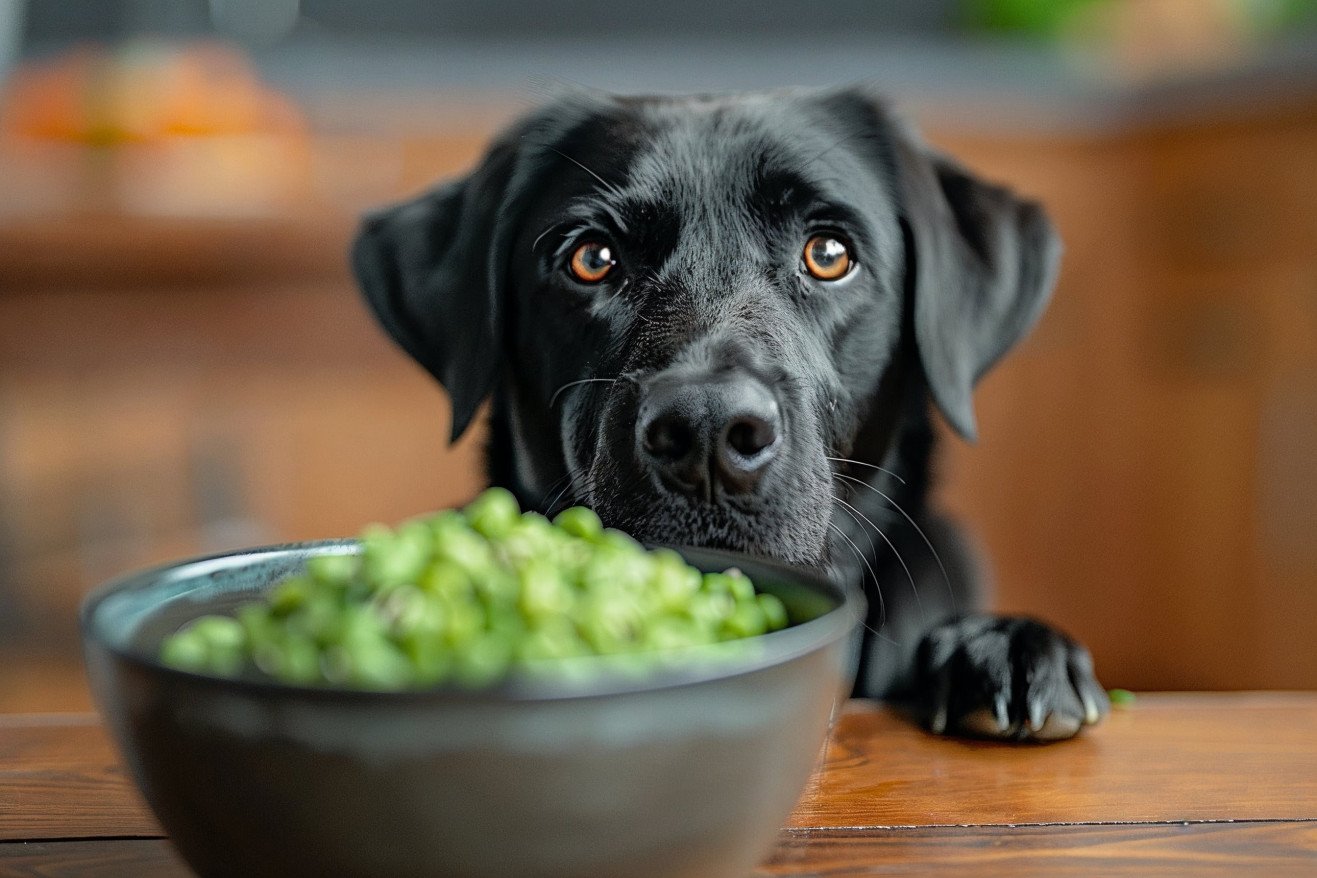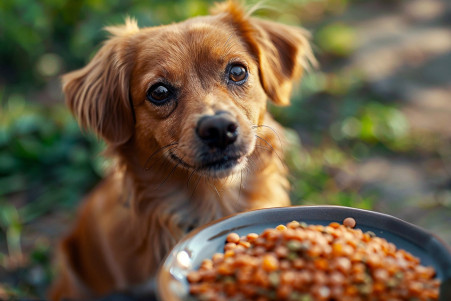Can Dogs Eat Lima Beans? How to Safely Feed Your Dog
2 March 2024 • Updated 29 February 2024

If you’ve ever found yourself wondering if you can share your food with your dog, you’re not alone. Many pet parents have asked if it’s OK to give their dogs lima beans.
The answer is yes, dogs can eat lima beans in moderation. They are a good source of protein, fiber, and other important nutrients.
However, when feeding your dog lima beans, it’s important to make sure they are cooked and unseasoned. This means that you should never give your dog canned lima beans because they are packed with sodium. Also, be sure to talk to your vet before adding lima beans to your dog’s diet.
This article will take a closer look at the nutritional content of lima beans and how the nutrients they contain can benefit your dog. It will also explore veterinary nutritional guidelines, research on the digestibility and effects of legumes in a dog’s diet, and information about potential allergies.
By bringing together information from these different areas of study, you will leave with a well-rounded view of how lima beans can fit into a healthy, well-rounded diet for your dog.
Can dogs eat lima beans?
Nutritional Value of Lima Beans for Dogs
Lima beans are a great source of nutrition for dogs, providing them with essential proteins, fiber, and vitamins that are important for their health.
Proteins are important for the growth and maintenance of muscles, as mentioned by All About Pets. Fiber helps keep the digestive system running smoothly and efficiently. This is important for maintaining a healthy digestive system.
In addition, lima beans are also a good source of minerals, including calcium, which is important for healthy bones, iron, which is important for a healthy circulatory system, as mentioned by Hepper, and magnesium, which is important for a number of bodily functions.
That said, it’s important to remember that these beans should be fed in moderation. Overeating can lead to digestive issues or even an imbalance of nutrients. Lima beans should make up no more than 10% of a dog’s daily diet to ensure that they are getting the benefits without the potential risks.
PetMD recommends soaking and cooking lima beans thoroughly before feeding them to your dog. In addition, it’s best to avoid any seasonings or additives. The healthiest option is to feed your dog plain beans. Start with a small amount to see how your dog reacts and then slowly introduce them to your dog’s diet while monitoring their health and behavior.
Why Lima Beans Are Good for Dogs: A Vet’s Perspective
Veterinarians, including those at VCA Animal Hospitals, have noted that dogs are omnivores, not carnivores, and have adapted to eat a variety of foods, including legumes. The most important thing about protein is the protein quality, not the protein source.
Therefore, legumes like lima beans offer a valuable plant-based protein source that dogs can digest and absorb, as shown in research published in PubMed Central. Legume proteins are important for building and maintaining strong muscles and other body functions.
In addition to being a protein source, legumes are also a source of fiber in the canine diet. According to the Association of American Feed Control Officials (AAFCO) standards, as explained by PetMD, legumes can help ensure that dogs get a well-rounded diet by providing a number of nutrients.
Research, including the study “Use of Legumes and Yeast as Novel Dietary Protein Sources in Extruded Canine Diets,” has shown that legumes are digestible and nutritionally adequate when used in commercial dog food. Therefore, lima beans can be an important part of a dog’s diet, providing variety and helping to ensure that a dog’s diet is nutritionally complete.
Legumes in Your Dog’s Diet: Digestibility and Health Implications
Legumes are a common ingredient in many dog foods because they are highly digestible and provide important nutrients for dogs. Legumes are complex carbohydrates, which means they provide a slow, steady release of energy that can help keep dogs going throughout the day.
In addition, as Redbarn Pet Products explains, while the protein in legumes is not a complete amino acid profile, it can still be a valuable part of a dog’s diet when it’s balanced with other proteins.
That said, the health implications of legume-rich diets, especially those that are marketed as ‘grain-free’, have been called into question. The FDA has even looked into whether these diets are linked to canine dilated cardiomyopathy (DCM), a serious heart condition, which has understandably worried many pet parents.
While the FDA has not found a direct cause, it has pointed out that the relationship between DCM and diet is complicated and that there are likely multiple factors that lead to the development of the condition.
This makes it especially important to make sure that legumes are part of a balanced and varied diet. In commercial dog foods, the value of legumes often depends on how they are combined with other ingredients to create a complete nutritional profile.
While we can still enjoy the nutritional benefits that legumes like lima beans can offer our dogs, it’s also important to make sure that we’re keeping an eye on their overall health and working with vets to make sure they’re getting the personalized nutrition they need.
How to Tell If Your Dog Has a Food Allergy: A Case Study on Lima Beans
While legumes like lima beans can cause food allergies in dogs, they are not as common of an allergen as animal proteins like beef, dairy, and chicken.
A study posted to PMC explains that food allergies in dogs tend to cause skin and gastrointestinal issues, like itching and digestive problems. As a result, these allergies can be hard to detect and often require pet owners to work with their veterinarians to conduct food elimination trials.
Another study, Food allergy in dogs and cats: a review on PubMed, explains that it is important to identify and treat food allergies through controlled diets. This means that if lima beans or another new food is added to a dog’s diet, it should be done so slowly. This way, pet owners can watch for signs of an allergic reaction, like itching, ear infections, or stomach issues.
Because dogs can have individual sensitivities, it’s important to always be cautious when introducing new foods. This means that when you start to add lima beans to your dog’s diet, you should start with a small amount and watch your pet closely.
This way, you can see if their symptoms improve or get worse, which can help you determine if your dog can tolerate lima beans and make sure that their diet is both safe and enjoyable.
Legume Lineup: The Best Beans for Your Dog
Lima beans, like many other legumes, are a great source of nutrition for dogs. Meanwhile, black beans are often praised for their protein and antioxidant content. According to Sundays for Dogs, black beans are full of essential amino acids and fiber, although the fiber can lead to gas in large quantities.
Kidney beans are also a good source of protein, but they need to be cooked thoroughly to remove toxins, as raw kidney beans contain toxic lectins.
Green beans are a great option for dogs and are full of vitamins A, C, and K, as well as fiber and folic acid, which can help with coat and nail health. Dog Child explains that green beans are easy to digest and a great option for dogs with sensitive stomachs, as long as they are served plain and without any toxic seasonings.
Lima beans are a great source of protein and fiber, but they need to be cooked properly to be safe, as raw lima beans contain a protease inhibitor that can cause digestive upset. To avoid this, Dog Child suggests introducing lima beans to your dog’s diet slowly.
When choosing the best legumes for your dog, consider their unique health concerns and digestive systems. In general, adding a variety of legumes in moderation can help ensure a well-balanced diet that provides a range of nutrients to support overall health.
Conclusion: Can Dogs Have Lima Beans?
In summary, you can feed your dog lima beans in a safe and healthy way by giving them to your pet in moderation and ensuring they are properly cooked. Lima beans are a good source of protein, fiber, and vitamins, and can help your dog maintain strong muscles and a healthy digestive system.
However, it’s important to talk to your vet before you make any changes to your dog’s diet to make sure that lima beans and other new foods are meeting your dog’s specific nutritional needs.
Keeping your dog healthy involves making sure they have a well-rounded diet, and lima beans can help with that if you introduce them to your dog’s diet slowly and watch out for any signs of an allergic reaction. In the world of dog nutrition, lima beans can be seen as a helpful but small part of a well-rounded and nutritious diet for your dog.
As always, every dog is different and their diet should be adjusted to meet their specific health needs. Lima beans and other legumes can be a healthy part of a dog’s diet, but it’s important to make sure that they are part of a diet that includes a wide range of nutrients that will help your dog be as healthy as possible.


